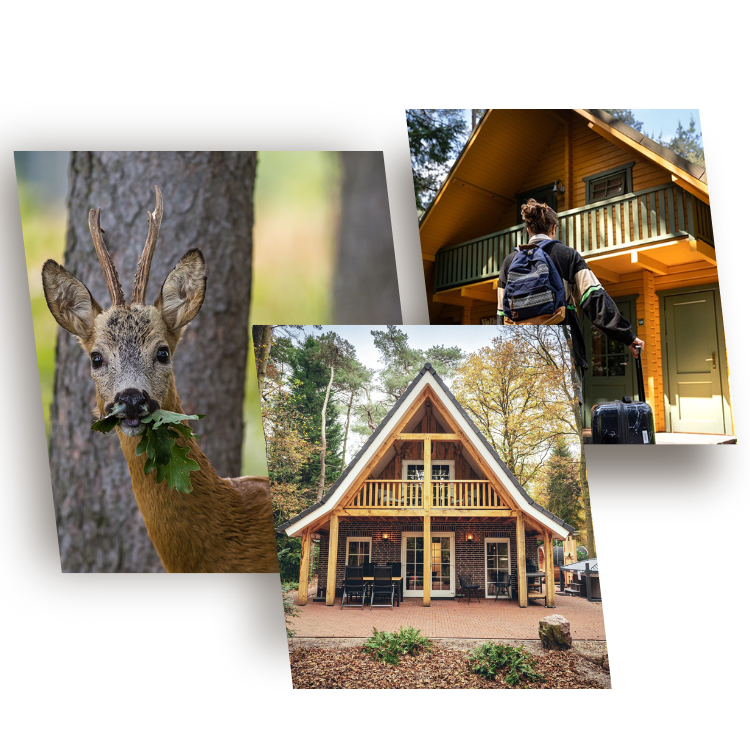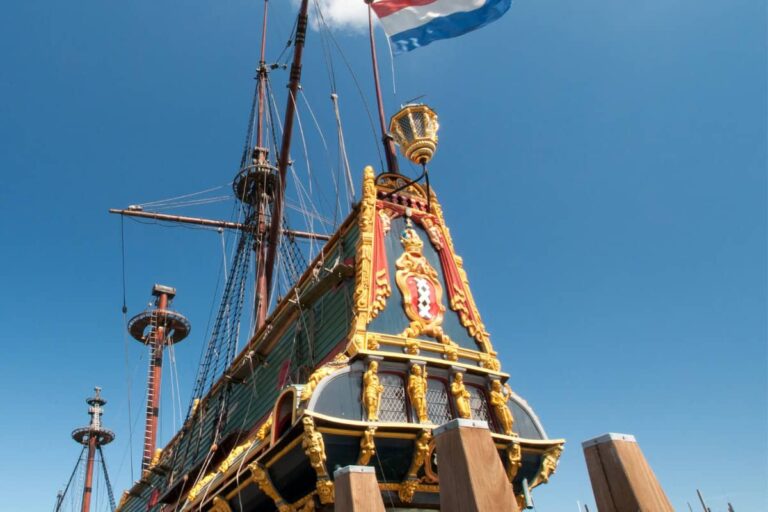Where Craftsmanship, History, and Adventure Come to Life
Imagine standing beside a towering wooden hull, its timbers shaped by hand using techniques from the 1600s, the scent of fresh oak and forge smoke drifting in the air. This is The Batavia Shipyard, a one-of-a-kind historical experience in Lelystad where maritime heritage isn’t just displayed behind glass — it’s built before your eyes. Whether you’re passionate about history or just curious to see how giant wooden ships once ruled the seas, this stop is unforgettable.
At the heart of the site is the Batavia, a full-size replica of a 17th-century VOC ship (Dutch East India Company vessel), known as a Spiegelretourschip, or mirror-return ship. Climb aboard and walk through the creaking decks, peek inside the Captain’s cabin, and stand beside the cannon that once defended merchant seafarers on their long journeys to the Indian Ocean. The level of detail is astonishing, from the masthead carvings to the rigging high above your head.
This impressive reconstruction is the work of master shipbuilder Willem Vos, who began the project in the 1980s using only traditional shipbuilding techniques. It is one of the few places in the world where visitors can explore a full-scale East Indiaman ship and learn how it was made — from keel laying to the carving of the futtocks and the careful selection of oak timber. Watch real shipwrights at work in the woodcarving workshops, explore the sail loft, or stop by the forge where blacksmiths shape tools by hand.
But there’s more to discover. The shipyard is part of the larger Museum Batavialand, which explores Dutch maritime history, archaeological finds, and dramatic stories of shipwrecks, trade missions, and famous figures like Michiel de Ruyter. Interactive exhibits and detailed ship models bring the past to life in a way that is both educational and surprisingly fun.
Best of all, Lelystad is just over an hour from Soest, where you can stay comfortably at our small, family-run bungalow park ’t Eekhoornnest. Its central location makes it easy to explore places like the Batavia Shipyard, without needing to rush. You can take your time, enjoy a full day by the water, and return to a quiet forest bungalow at night.
Hidden Workshops, Waterside Dining, and Other Details to Look For
While the Batavia ship itself draws most of the attention — and rightfully so — there’s far more to discover if you take a little time to explore the shipyard’s corners and the surrounding area in Lelystad. From hands-on exhibits to cozy cafés with harbor views, this part of the Netherlands offers history with heart and flavor.
Craftsmanship in Action: Behind the Shipyard Gates
One of the best surprises at De Bataviawerf is that it’s not just a display — it’s a living historic shipbuilding site. Step into the forge workshop, where blacksmiths hammer metal the old-fashioned way, and you’ll hear the rhythmic sound of hammer and anvil echoing through the space. Nearby, you’ll find the woodworking shed, where you can watch artisans shape parts of ships using techniques that have been passed down through centuries.
Don’t skip the cable workshop or decor workshop either. These lesser-known stops offer a closer look at how rigging, ropes, and ornamental features were crafted. Kids often love trying their hand at simple knots or getting close to the tools used by the shipwrights. You might even come across a demonstration on how dendrochronological analysis — or tree-ring dating — helps researchers trace the timber sources used in original VOC ships and even shipwrecks.
There’s also an exhibit on De Zeven Provinciën, another major project of the shipyard that brings to life a massive 17th-century admiralty ship. The scale models, blueprints, and background on this warship give a fascinating look at Dutch naval power during the Golden Age. If you’re lucky, you might witness work being done on the replica’s frame, sails, or fittings.
Eat and Relax: Dining Near the Water
Once you’ve worked up an appetite, stroll over to one of the waterside restaurants near the Markermeer harbor. With outdoor terraces and calm views of the boats, this is the perfect spot to slow down and take in the atmosphere. Try a seafood platter or something classic and hearty, like Dutch pea soup or pancakes with bacon and syrup.
The on-site café inside Museum Batavialand also serves simple lunches, snacks, and warm drinks. It’s ideal for families needing a quick break, or travelers who want to enjoy a bite without leaving the historical setting. The café often features photos and maritime artifacts on the walls, adding a touch of charm to your coffee break.
Small Touches That Bring It All to Life
Before you leave, don’t forget to browse the museum shop. It’s full of gifts inspired by maritime history, including detailed ship models, postcards, tools, and plastic model kits for budding sailors. Some items are replicas of objects found in archaeological research or inspired by the voyages of the original Ship Batavia.
You can also explore interactive exhibits that compare shipbuilding styles from other eras, including references to famous vessels like Sweden’s Vasa, England’s Mary Rose, and even Viking ships. These comparisons make Batavia’s story feel even more special and help place Dutch innovation into a broader global context.
The Batavia Shipyard isn’t just about looking back. It’s about experiencing the skills and stories that shaped the Netherlands as a maritime powerhouse. And whether you’re into woodworking, navigation aids, or just really like seeing how things are built, this is one of those places that sticks with you long after the visit ends.



